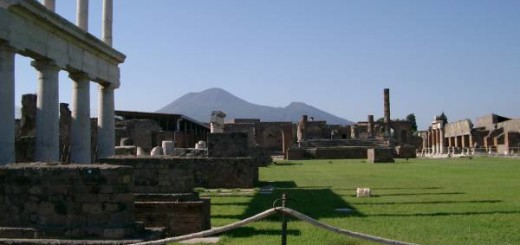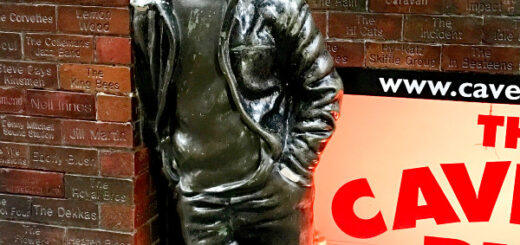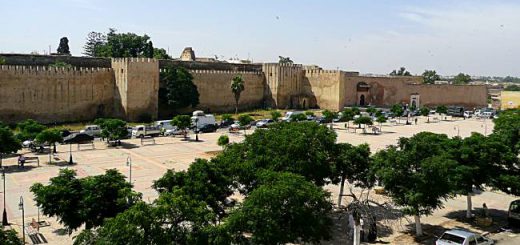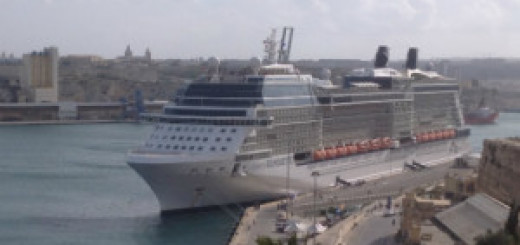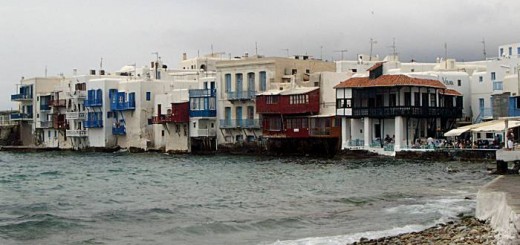The Old Town of Regensburg
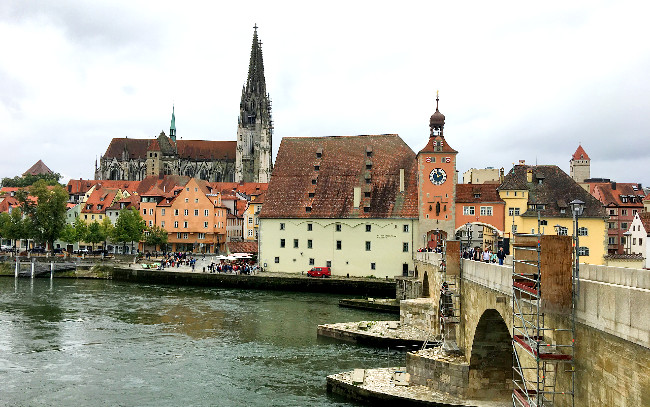
The Altstadt of Regensburg and the settlement of Stadtamhof, on an island north of the town, became Germany’s 32nd World Heritage site in 2006. Once the important Roman city of Castra Regina, it developed greater importance during the Middle Ages due to its location on continental trade routes and its status as home to the Imperial Diet (parliament) of the Holy Roman Empire, from 1663 to 1806. Very little damage was sustained by it during WWII, making it an outstanding example of a well preserved medieval trading town.

Due to low water levels on the Main-Danube canal, we commuted from Nuremberg to Regensburg by coach, arriving at the vehicle friendly village of Stadtamhof, allowing us to enter the old town on foot via the Steinerne Brücke (Stone Bridge) with its 16 arches over the non-navigable Danube River. This bridge was constructed between 1135 and 1146 making it one of Europe’s earliest intact bridges.
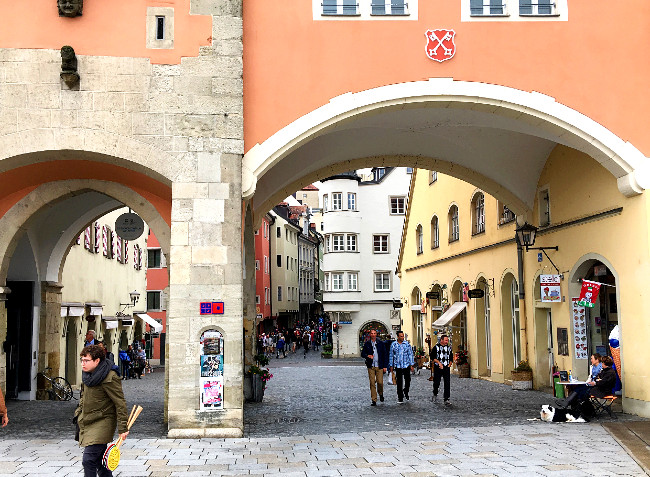
At the city end of the bridge a clock tower stands in place of one of the original three bridge towers, with a wider arch to the side to allow traffic. However since renovations to the bridge are underway, all vehicle traffic is now prohibited.
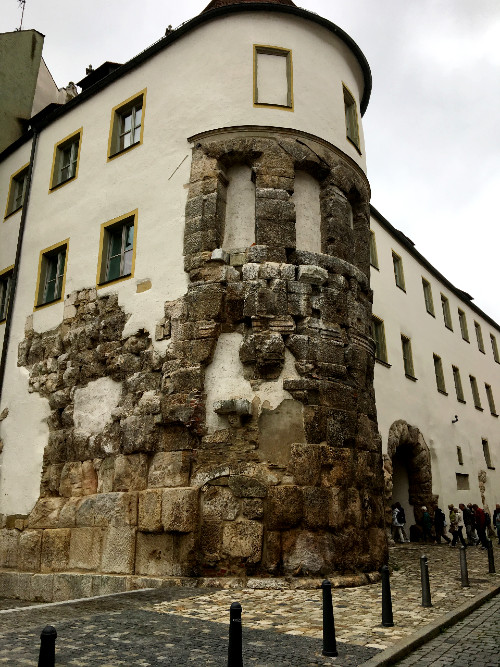
Coming further into the city centre from the river, we were shown Germany’s most ancient stone building, the Porta Praetoria, a gateway dating from 179 AD. The giant blocks of stone incorporated into the building were once part of the northern wall of the Roman military camp.
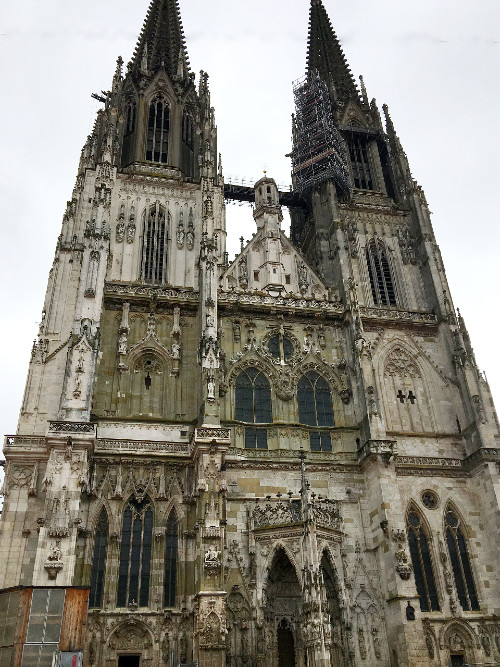
Together with the Stone Bridge, The Cathedral of St Peter stands as a major emblem of the city. Gothic in design, it was built between 1275 and 1639, the final touches added in 1869 with the erection of the towers and spires.
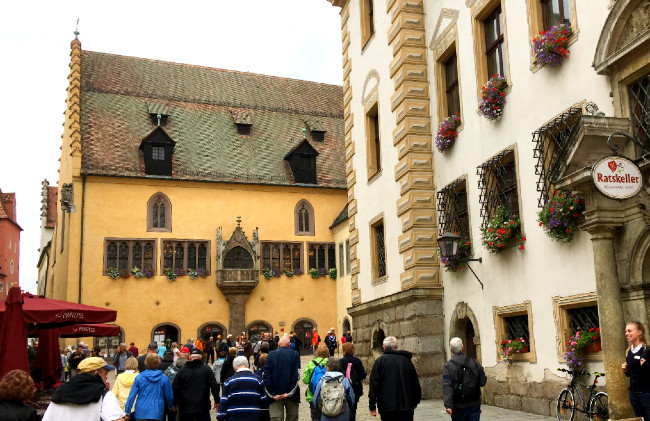
Another notable collection of buildings makes up the Altes Rathaus (Old Town Hall), on the Kohlenmarkt (Coal Market) square. Dating from the 14th century, the complex consists of the Town Hall clock tower, the yellow Gothic Imperial Chamber building and the baroque Town Hall.

A number of parks circle the city to the south, where we glimpsed through the trees the Thurn and Taxis Palace, formerly St. Emmeram’s Abbey, a Benedictine monastery founded in about 739. The entrance to a courtyard leading to the actual Basilica was striking in its simplicity, providing quite a contract to the baroque interior of the church itself.
Returning to the city along Martin Luther street, we called in to the Stadtmuseum, housed in a former monastery, for a look through Regensburg’s history from the Stone Age to the present day. It also displays art exhibits. Admission is complimentary.

Then back towards the bridge, we stopped beside a large building once used as a salt store, where a tiny old building housing the historic sausage kitchen (Würstküche) with its outside trestle tables and market umbrellas acts as a magnet to all the tourists. Their menu consists of various types of fried sausage served with sweet mustard and sauerkraut. We made sure to sample these before we headed back to the river ship.


